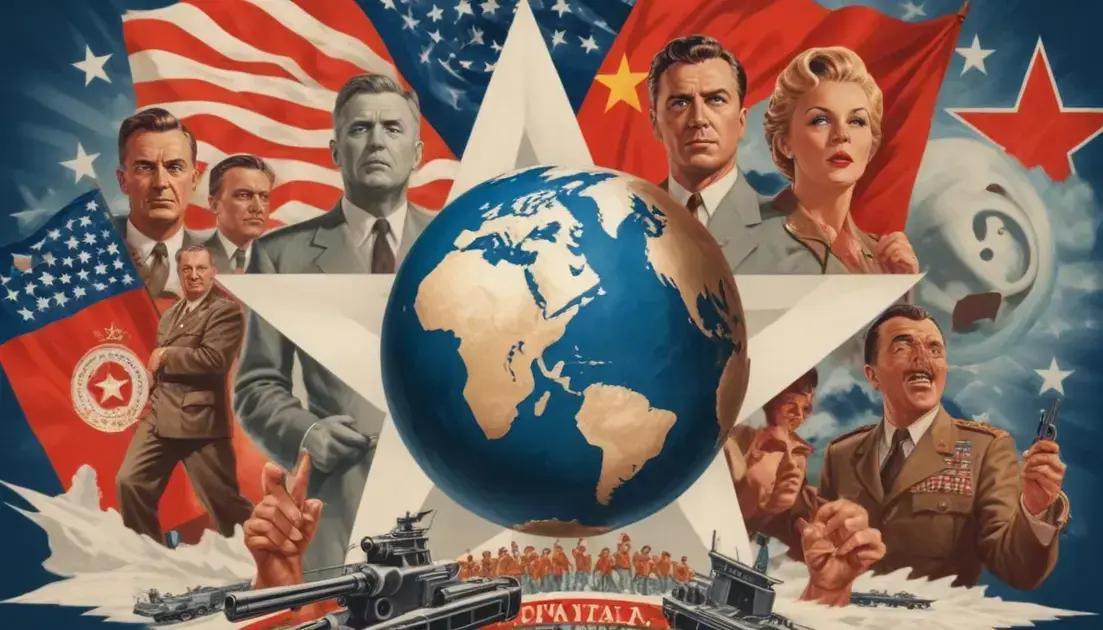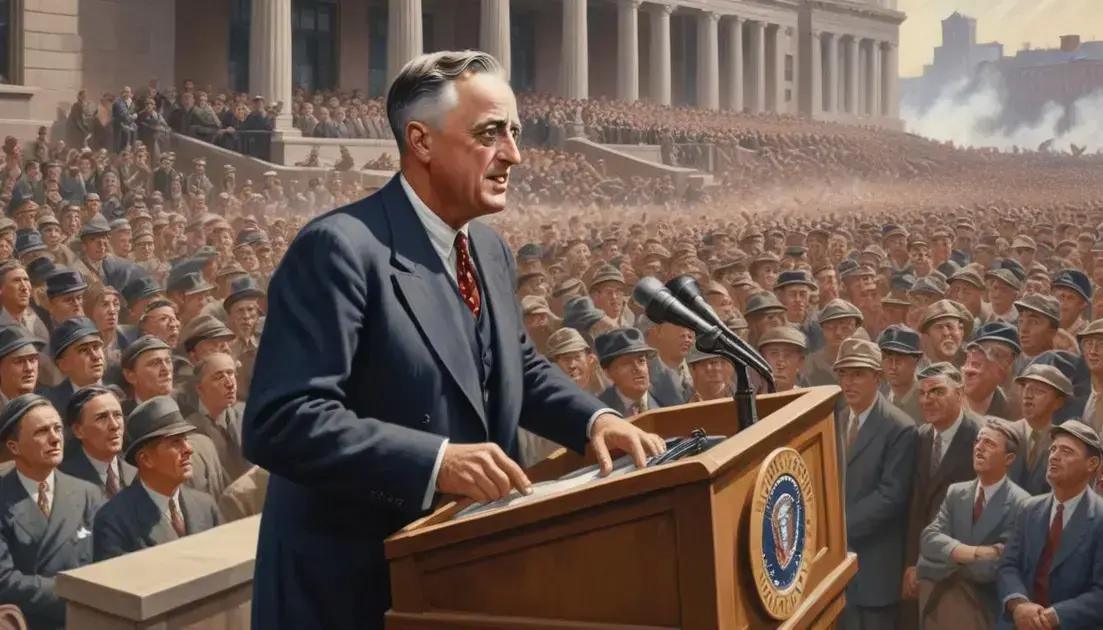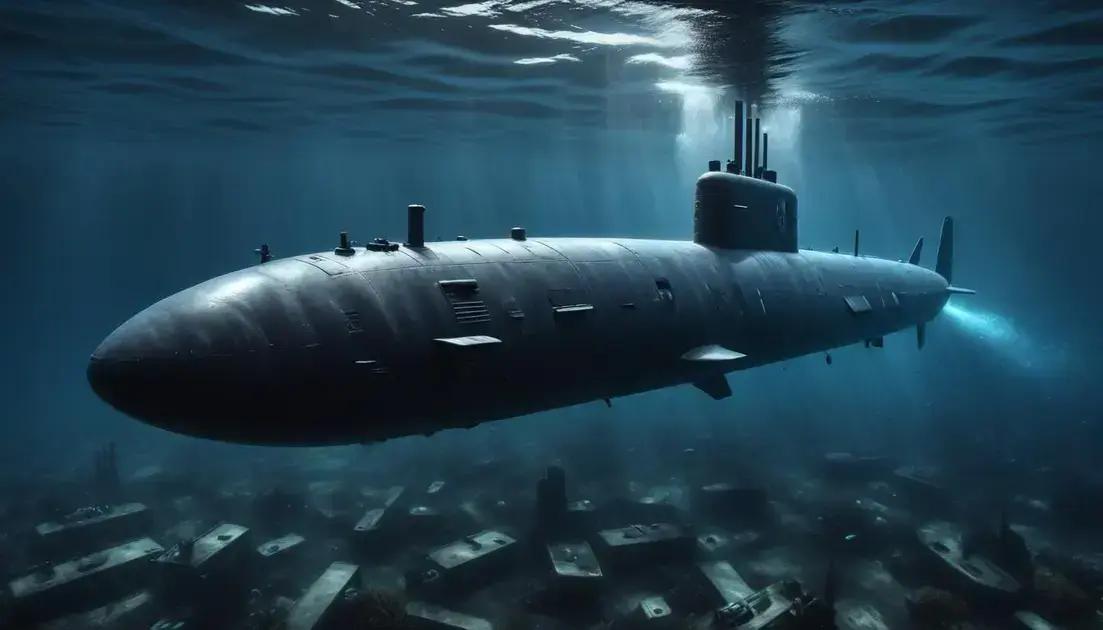
Cold War Propaganda: Hearts and Minds in Dispute
Cold War propaganda significantly influenced modern society by shaping public opinion, political polarization, and cultural perceptions. Its tactics are still relevant in today’s media landscape, teaching us the importance of critical thinking. Notable propaganda campaigns like The Voice of America and the use of sports highlighted how nations promoted their ideologies. Understanding these historical influences is crucial for fostering informed citizens who can navigate contemporary issues effectively.
Cold War propaganda plays a pivotal role in shaping the narrative of one of history’s most significant clashes. Ever wondered how films and music shaped public sentiment during this era?
The role of film in Cold War propaganda
Films played a huge role in Cold War propaganda. They influenced how people thought about the world around them. Movies weren’t just for entertainment; they were tools for shaping public opinion during this tense time.
How Films Conveyed Messages
Filmmakers used storytelling to communicate ideas. Some movies celebrated democracy, while others highlighted the dangers of communism. The stories made viewers think about their values and beliefs.
Famous Movies of the Time
Several films became iconic during the Cold War. For example, “Dr. Strangelove” satirized the fear of nuclear war. This film used humor to reflect serious issues while making people aware of global tensions. “The Manchurian Candidate” showed fears of brainwashing and espionage.
Impact on Public Perception
These films shaped how the public viewed the enemy. They created stereotypes that lasted long after the Cold War ended. Movies helped build fear and distrust, effectively influencing viewers’ opinions about foreign countries and their leaders.
The Lasting Legacy of Cold War Films
The impact of these movies continues today. They set the stage for how future conflicts are portrayed in cinema. Understanding this history helps us see how film can influence society and politics.
Music’s influence in shaping perceptions
Music has always been a powerful way to share ideas. During the Cold War, it played a big role in shaping perceptions. Songs weren’t just for fun; they were part of the propaganda battle.
How Lyrics Conveyed Messages
Many songs had messages about freedom and democracy. They encouraged listeners to think about their values. For example, protest songs highlighted issues like war and civil rights.
Famous Songs of the Era
One famous song, “Imagine” by John Lennon, called for peace and unity. Its hopeful message resonated with many, making people dream of a better world. This song became an anthem for change.
Impact on Popular Culture
Music shaped popular culture during the Cold War. Artists like Bob Dylan and Joan Baez used their platform to criticize the government. Their songs raised awareness and rallied support for various causes.
The Legacy of Cold War Music
The influence of Cold War music can still be felt today. Many songs from that time continue to inspire new generations. Understanding this legacy helps us see the power of music in activism and social change.
Sports as a tool for soft power
Sports have always been more than just games. During the Cold War, they became important tools for soft power. Countries used sports to improve their image and influence others.
Defining Soft Power
Soft power refers to influence through cultural means rather than military force. It’s all about winning hearts and minds. By promoting sports, nations showcased their values and lifestyles.
The Role of International Competitions
Events like the Olympics served as stages for showcasing nations. Countries wanted to prove they were the best. Success in sports boosted national pride and unity.
Notable Examples
One famous example is the “Miracle on Ice” at the 1980 Winter Olympics. The U.S. hockey team beat the Soviet Union, becoming a symbol of hope and resilience. This win resonated beyond sports, impacting political perceptions.
Building Alliances through Sports
Sports also helped build bridges between countries. Friendly matches and tournaments created chances for diplomacy. They provided a way to connect and communicate without politics getting in the way.
The Lasting Impact of Sports Diplomacy
The influence of sports continues today. They remain powerful in shaping international relations. Events still bring people together and help ease tensions between nations.
Case studies of successful propaganda campaigns
Many propaganda campaigns during the Cold War left a lasting impact. They provided valuable lessons on how to shape public opinion. Let’s look at some case studies that illustrate this.
Example 1: The Voice of America
The Voice of America (VOA) was a radio service that broadcasted news and cultural programming. It aimed to promote American values abroad. By providing reliable information, VOA countered misinformation from enemy states.
Example 2: The Congress for Cultural Freedom
The Congress for Cultural Freedom organized cultural events to showcase Western art and literature. These events highlighted the benefits of democracy, contrasting them with the restrictions of communism. They spread ideas through music, art, and journalism.
Example 3: Film as a Tool
Films like “The Red Menace” portrayed the evils of communism. They combined entertainment with a strong message. This approach effectively swayed public opinion against communist ideology.
Example 4: Olympic Propaganda
The Olympics were often used as a platform for propaganda. Each country wanted to display its strength and superiority. The 1980 Moscow Olympics became a stage for showcasing Soviet power while also facing a boycott from several nations.
Lessons Learned
These case studies show how effective messaging can influence perceptions. Understanding these methods helps us analyze modern propaganda tactics. They remind us of the enduring power of culture in shaping beliefs.
The lasting impact of Cold War propaganda on modern society
The impact of Cold War propaganda still resonates today. It shaped how we view government, media, and culture. Many lessons from that era remain relevant.
Influencing Public Opinion
Cold War propaganda taught us how media can manipulate perceptions. Today, with social media, similar techniques are used to influence our beliefs. Understanding this helps us be more critical of the information we consume.
Political Polarization
Propaganda during the Cold War contributed to strong divisions between ideologies. This polarization continues in our politics today. People often align closely with their side, leading to misunderstandings and conflict.
Cultural Reflections
Films, music, and art from the Cold War still shape our culture. They reflect our fears and hopes from that time. These cultural artifacts help us understand today’s societal issues.
Education and Awareness
Teaching about Cold War propaganda is essential. It helps students recognize propaganda in various forms today. Education empowers people to question and analyze the messages they encounter every day.
The Global Perspective
Finally, the impact extends beyond America. Countries worldwide still feel the effects of Cold War narratives. Understanding these influences can improve international relations and foster mutual respect.
Conclusion
In conclusion, the influence of Cold War propaganda is still very much alive today. It has shaped our views on politics, media, and culture in lasting ways. Understanding these impacts helps us navigate the media landscape we live in.
From public opinion to political divisions, the lessons from that era remind us to think critically. Education about this topic is key. It empowers us to recognize similar tactics used today, making us better informed citizens.
As we consider the global effects of Cold War narratives, we learn that awareness is crucial. By understanding how these messages shaped the past, we can work toward building a more respectful and informed society. In essence, reflecting on the past helps us create a brighter future.


